Latvia
Welcome to Latvia
Nestled on the eastern edge of the Baltic Sea, Latvia is a captivating blend of old-world charm, pristine nature, and vibrant modern culture. Often described as a hidden gem of Northern Europe, this compact country surprises visitors with its enchanting forests, sweeping beaches, medieval towns, and dynamic capital city. Whether you’re seeking adventure, relaxation, or a deep dive into history and tradition, Latvia offers a travel experience that is both authentic and unforgettable.
Latvia is one of the three Baltic states, bordered by Estonia to the north, Lithuania to the south, Russia to the east, and the Baltic Sea to the west. Despite its modest size, Latvia boasts an extraordinary diversity of landscapes and experiences. Over half of its territory is covered in forests, and its 500-kilometer coastline features white-sand beaches, wild dunes, and charming resort towns. The country’s population is just under two million, with Riga, the cosmopolitan capital, serving as its cultural and economic heart.
Latvia’s history is a tapestry woven from centuries of foreign rule, from German knights and Swedish kings to Russian tsars and Soviet commissars. This rich past is evident in the country’s architecture, traditions, and museums. Today, Latvia is a member of the European Union and the Schengen Area, making travel easy for most visitors.
Why Visit Latvia?
1.
Latvia is a paradise for nature lovers and adventure seekers. With over half the country blanketed in forests, and a landscape dotted with lakes, rivers, and national parks, there’s no shortage of outdoor activities. Gauja National Park, the country’s largest, is famed for its ancient forests, sandstone cliffs, and the fairytale-like Turaida Castle. Hikers, cyclists, and canoeists will find endless trails and waterways to explore. The Kolka Peninsula and Slītere National Park offer unique opportunities to spot wildlife, roam through untouched woodlands, and enjoy the tranquility of the Baltic coastline.

2.
Beyond Riga, Latvia’s smaller towns offer their own charms. Cēsis is famed for its medieval castle and picturesque streets, while Sigulda is known as the “Switzerland of Latvia” for its dramatic river valleys and adventure sports. Liepāja, on the west coast, is a hub for music lovers, with a vibrant pop-rock scene and beautiful beaches. The Latgale region in the east, often called the “Land of Blue Lakes,” is dotted with serene lakes and historic sites, perfect for those seeking tranquility and authenticity.
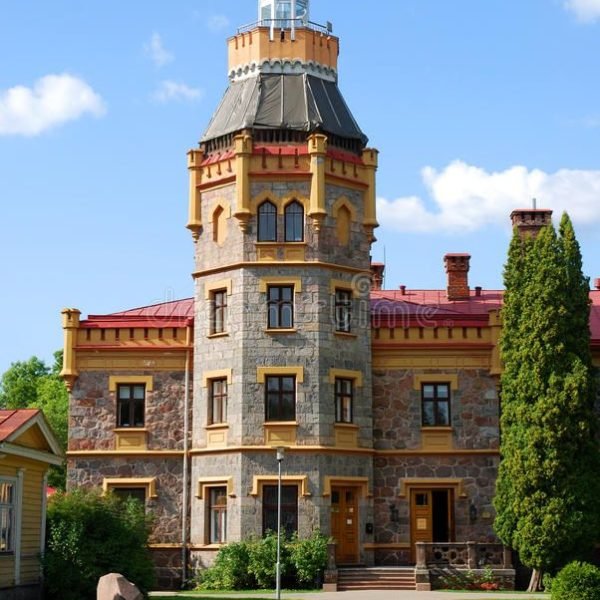
Planning Your Trip
Visa Information
Schengen Visa and Entry Requirements
Latvia is a member of the Schengen Area, which means that travelers from many countries can enter visa-free for short stays of up to 90 days within a 180-day period. These short visits can be for tourism, business, family visits, or cultural events. However, your eligibility for visa-free entry depends on your nationality. Citizens of the European Union, the United States, Canada, Australia, and several other countries typically do not require a visa for short stays. If you’re unsure about your requirements, always check with the nearest Latvian embassy or consulate before booking your trip.
Who Needs a Visa?
Travelers from countries that do not have a visa-free agreement with the Schengen Area will need to apply for a Schengen visa before arriving in Latvia. This includes many African, Asian, and Middle Eastern countries. The most common visa is the short-stay “Type C” Schengen visa, which allows you to travel within all Schengen countries, including Latvia, for up to 90 days.
Visa Application Process
To apply for a Latvian Schengen visa, you will need to:
- Hold a valid passport issued within the last 10 years, with at least three months’ validity beyond your planned departure from the Schengen area and at least two blank pages.
- Complete and sign the Schengen visa application form.
- Provide two recent passport-sized photos (35mm x 45mm).
- Submit a travel medical insurance policy covering at least €30,000 for emergency medical care and repatriation, valid throughout the Schengen area for the entire stay.
- Show proof of accommodation, such as hotel bookings or an invitation from a host.
- Present a travel itinerary and proof of return or onward travel.
- Demonstrate sufficient funds to cover your stay (the required amount varies, but you may be asked to show recent bank statements or proof of income).
- Pay the visa application fee, typically €80 for adults.
- Depending on your circumstances, you may need to provide additional documents, such as an employment letter, proof of university enrollment, or parental authorization for minors.
Applications are usually submitted in person at a Latvian embassy, consulate, or through an authorized visa application center. Biometric data (fingerprints) are typically collected during the process. It’s recommended to apply at least 15 days before your intended travel date, but not more than six months in advance10.
Longer Stays and Other Visas
If you plan to stay in Latvia for more than 90 days, for work, study, or family reunification, you will need to apply for a national long-stay visa or residence permit. The requirements for these visas are more extensive, often including proof of financial means, health insurance, and sometimes a basic Latvian language test for residency applicants.
Golden Visa Program
For those interested in residency through investment, Latvia offers a Golden Visa program. This requires a significant financial investment in real estate, business, or government bonds, and can lead to long-term residency and, eventually, citizenship. The process involves making the qualifying investment, submitting the necessary documents, and attending a biometric appointment in Latvia.
Best Time to Visit
Latvia experiences four distinct seasons, each offering unique attractions and activities.
Spring (April to June):
Spring is a wonderful time to visit as the countryside bursts into bloom and the days grow longer. Temperatures are mild, and popular sites are less crowded.
Summer (June to August):
Summer is the peak tourist season, with warm temperatures (typically 18–25°C), long daylight hours, and a lively atmosphere. This is the best time for festivals, outdoor events, and enjoying Latvia’s beautiful beaches, especially in Jūrmala. The famous Midsummer festival (Jāņi) is celebrated in June, offering a fascinating glimpse into Latvian traditions.
Autumn (September to November):
Autumn brings a riot of color to Latvia’s forests and parks. The weather is cool and crisp, ideal for hiking and exploring the countryside. The crowds thin out, and accommodation prices drop.
Winter (December to March):
Winter transforms Latvia into a snowy wonderland, perfect for those who enjoy winter sports like cross-country skiing and ice skating. Riga’s Christmas markets are a highlight, and the festive season brings a cozy charm to the cities and towns.
When to Go:
For most travelers, late spring to early autumn (May to September) is the best time to visit, offering the most pleasant weather and the widest range of activities. However, if you’re drawn to winter festivities or snow sports, December through February is equally magical.
Getting To and Around
Getting to Latvia
By Air:
Riga International Airport is Latvia’s main gateway, offering direct flights to and from major European cities and several destinations further afield. The airport is located just 10 kilometers from Riga’s city center, with regular bus and taxi services providing easy access.
By Train:
International train connections are available from neighboring countries, including Lithuania, Estonia, and Russia. However, train travel is more commonly used for domestic journeys within Latvia.
By Bus:
International bus services connect Latvia with many European cities. Buses are comfortable, reliable, and often more affordable than trains for cross-border travel.
By Car:
Latvia is accessible by car from neighboring countries, with well-maintained roads and border crossings. Renting a car is a convenient option for exploring the countryside and smaller towns.
By Ferry:
Ferry services operate between Riga and several Scandinavian ports, including Stockholm, providing a scenic and leisurely way to arrive in Latvia.
Getting Around Latvia
Public Transport:
Latvia has an efficient and affordable public transport system. In Riga, trams, buses, and trolleybuses cover the city and suburbs. Tickets can be purchased at kiosks, online, or via mobile apps, and must be validated upon boarding.
Trains:
Latvia’s rail network connects Riga with major towns and cities, including Sigulda, Cēsis, Daugavpils, and Liepāja. Trains are generally punctual and comfortable, making them a good choice for day trips and regional travel.
Buses:
Intercity buses are frequent, reliable, and serve even remote villages. The main bus station in Riga is a hub for routes across the country.
Taxis and Rideshares:
Taxis are widely available in cities, and rideshare services like Bolt operate in Riga and other urban areas. Always use licensed taxis or reputable apps to ensure safety and fair pricing.
Car Rental:
Renting a car is ideal for exploring Latvia’s countryside, national parks, and coastal regions at your own pace. Roads are generally in good condition, and driving is straightforward for visitors familiar with European road rules.
Cycling:
Latvia is increasingly bike-friendly, with dedicated cycling paths in cities and scenic routes through forests and along the coast. Bicycles can be rented in Riga and other major towns.
Final Tips
- Travel Insurance: Comprehensive travel insurance is required for visa applicants and strongly recommended for all travelers.
- Language: Latvian is the official language, but English is widely spoken in tourist areas.
- Currency: Latvia uses the euro (€).
- Safety: Latvia is considered a safe destination, but standard travel precautions apply.
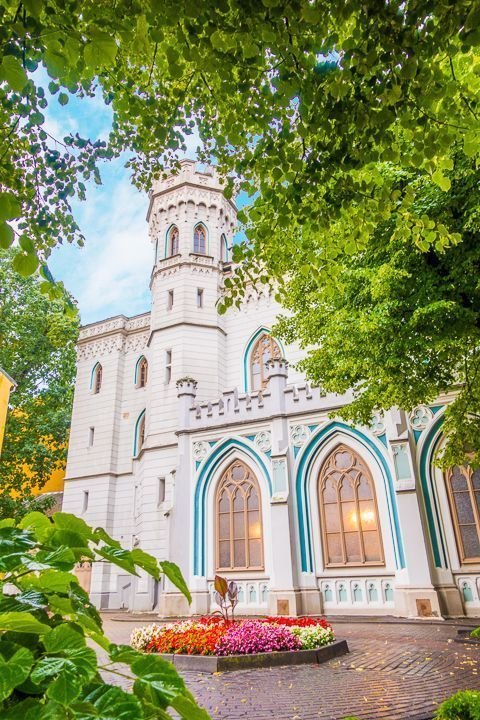
Accommodation
Latvia offers a diverse range of accommodation options to suit every traveler’s taste and budget, from luxury hotels and boutique guesthouses to budget hostels and cozy countryside retreats. Whether you plan to stay in the lively capital Riga or explore the tranquil countryside and coastal towns, you’ll find comfortable and welcoming places to rest.
Hotels and Boutique Stays
In Riga, the capital and largest city, visitors can choose from a wide variety of hotels. The city’s Old Town is dotted with elegant boutique hotels housed in historic buildings, many showcasing exquisite Art Nouveau architecture. For example, the Neiburgs Hotel, a 4-star property in the heart of Old Town, offers stylish, air-conditioned apartments with kitchenettes, perfect for travelers seeking comfort and convenience. Similarly, the Avalon Hotel & Conferences and Metropole Hotel by Semarah blend classic charm with modern amenities, providing luxurious stays near key cultural sites like the Opera House and Freedom Monument.
For those who prefer modern conveniences, hotels like Aston Hotel Riga feature fitness centers, terraces, and 24-hour front desks, catering to business travelers and tourists alike. The Grand Hotel Kempinski Riga stands out for its spa and wellness facilities, ideal for those looking to relax after a day of sightseeing.
Guest Houses and Budget Options
For a more intimate and often more affordable experience, Riga and other Latvian cities offer numerous guest houses and small hotels. The Suites By Riga Old Town guest house is popular for its proximity to major attractions and free Wi-Fi. Imperija Hotel, located in the Ziemelu district, offers free private parking and easy access to cultural landmarks and natural sites.
Budget travelers will find hostels such as Cinnamon Sally Hostel, located near Riga’s Central Station, providing clean, friendly accommodations with communal kitchens and 24-hour reception. This is a great option for backpackers and those looking to meet fellow travelers.
Countryside and Coastal Stays
Outside Riga, Latvia’s smaller towns and coastal resorts also provide excellent lodging options. In Jūrmala, the country’s premier beach resort, visitors can stay in charming wooden villas, boutique hotels, or modern spa resorts. For nature lovers, guesthouses near Gauja National Park or in regions like Latgale offer peaceful retreats surrounded by forests and lakes.
Student and Long-Term Accommodation
For those planning extended stays, including students, Latvia has a range of affordable housing options such as dormitories, shared apartments, and private rentals. Many universities in Riga provide student dorms with essential amenities, while private landlords offer furnished apartments at competitive monthly rates. These options are increasingly popular among international students and long-term visitors seeking a home-like environment.
Booking Tips
Accommodation prices vary seasonally, with July and August being peak months due to summer tourism and festivals. Booking well in advance is recommended during this period to secure the best rates and availability. Many hotels and guesthouses provide free cancellation policies, adding flexibility to travel plans.
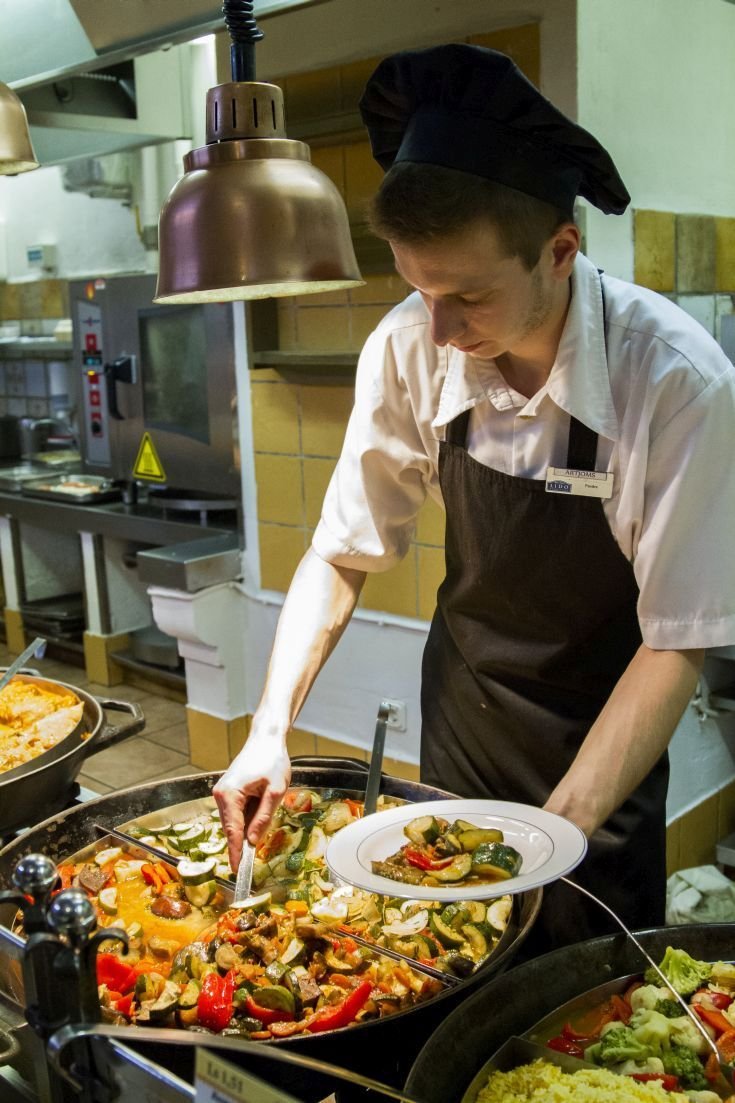
Food and Drink
Latvian cuisine is a delightful reflection of its natural surroundings and cultural heritage, combining hearty, rustic flavors with fresh, seasonal ingredients. The country’s food scene has evolved significantly, with traditional dishes served alongside innovative modern cuisine in restaurants across the country.
Traditional Latvian Cuisine
Latvian food is rooted in the land and sea, featuring ingredients like rye bread, potatoes, mushrooms, dairy products, pork, and fresh fish from the Baltic Sea and inland lakes. A classic starter is grey peas with speck-a simple yet flavorful dish of boiled peas mixed with smoked bacon or pork fat, often enjoyed during festive occasions.
Soups are a staple of Latvian meals, with varieties such as cold beetroot soup (aukstā zupa), mushroom soup, and hearty potato or barley soups warming diners in colder months. Rye bread, dense and dark, is a national staple, often served fresh or used to make sklandrausis, a traditional sweet pastry filled with carrot and potato.
Fish lovers will appreciate smoked sprats, herring prepared in various ways, and freshly caught salmon or pike-perch. Meat dishes often feature pork, including sausages and roasts, as well as game meats in rural areas.
Modern and International Influences
In recent years, Latvia’s culinary scene has embraced modern techniques and international influences. Riga, in particular, boasts a growing number of fine dining restaurants and trendy cafes. Chefs creatively blend traditional ingredients with contemporary presentation and global flavors, earning recognition on the European gastronomic map.
Farm-to-table dining is popular, with many restaurants sourcing ingredients locally to highlight Latvia’s rich natural bounty. Seasonal menus reflect the best of spring greens, summer berries, autumn mushrooms, and winter root vegetables.
Street Food and Markets
For a casual taste of Latvian food culture, Riga’s Central Market is a must-visit. Housed in former Zeppelin hangars, the market offers a vibrant atmosphere and a vast array of fresh produce, smoked fish, cheeses, baked goods, and ready-to-eat snacks. Here you can sample Latvian rye bread, homemade cheeses, and local honey or try quick bites like piragi-small pastries filled with bacon, mushrooms, or cabbage.
Street food festivals and pop-up markets are increasingly common in Riga and other cities, offering everything from Latvian pancakes (plācenīši) to international street eats.
Drinks: From Traditional to Trendy
Latvia’s beverage culture is as rich as its food. Traditional drinks include kvass, a mildly fermented rye bread beverage, and Riga Black Balsam, a dark herbal liqueur with a distinctive bittersweet flavor, often enjoyed as a digestif or in cocktails.
Beer is widely popular, with a growing craft beer scene producing a variety of ales, lagers, and specialty brews. Many breweries offer tours and tastings, providing insight into Latvian brewing traditions.
Coffee culture thrives in Riga’s numerous cafes, where locals and tourists alike enjoy expertly brewed espresso and specialty drinks. Tea, often infused with local herbs like linden flowers or chamomile, is also a common choice.
Dining Experiences
Latvian hospitality shines in its dining experiences, from cozy family-run taverns to elegant restaurants. Many establishments emphasize warm service and a welcoming atmosphere. For a truly authentic experience, visitors should try a traditional Latvian meal accompanied by folk music or attend a festive banquet during cultural celebrations.
Dietary Considerations
While traditional Latvian cuisine is meat and dairy-heavy, vegetarian and vegan options are increasingly available, especially in urban areas. Many restaurants now cater to diverse dietary preferences, offering creative plant-based dishes using local vegetables and grains.
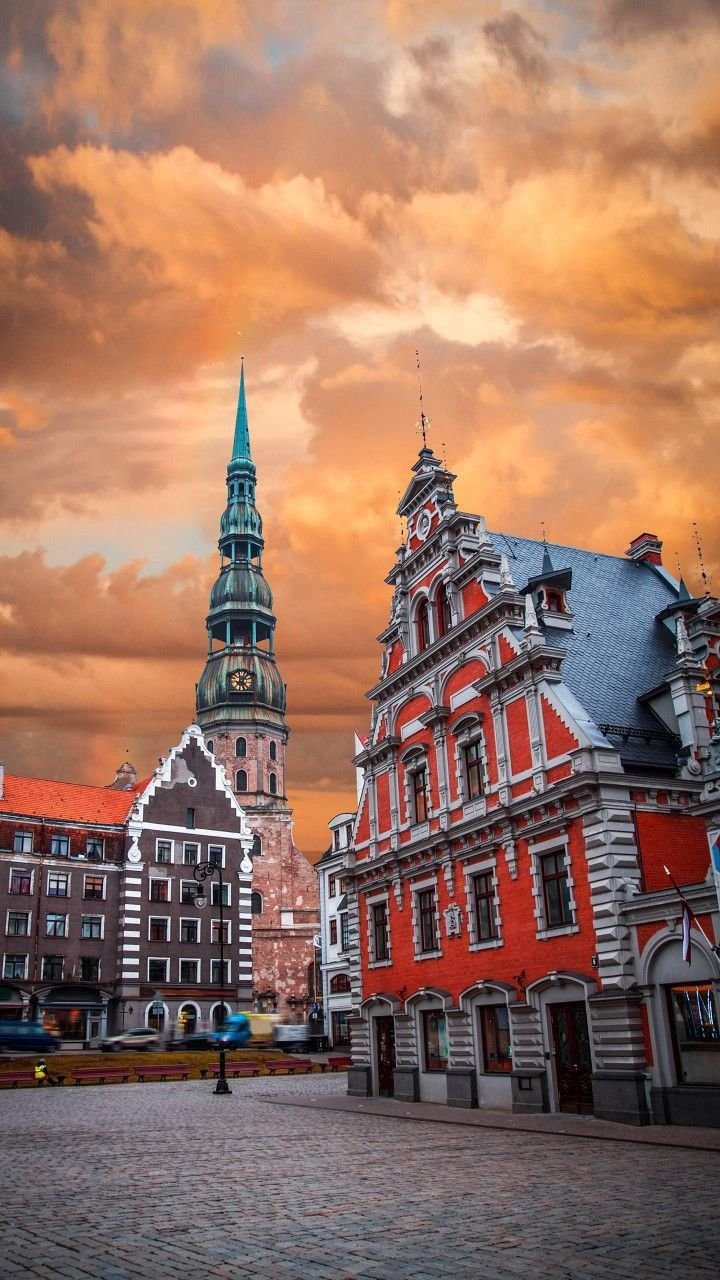
Must-See Attractions
Riga – The Baltic Metropolis
Riga, Latvia’s capital and the largest city in the Baltics, is a dynamic blend of medieval charm and modern energy. Its UNESCO-listed Old Town (Vecrīga) is a must-visit, with cobblestone streets winding past Gothic spires, Baroque facades, and one of the world’s largest collections of Art Nouveau architecture. Key highlights include the House of the Black Heads, a stunningly reconstructed guild hall, and St. Peter’s Church, whose tower offers panoramic city views.
Riga Central Market, housed in historic Zeppelin hangars, is an essential stop for food lovers and culture seekers alike. Here, you can sample local delicacies like smoked fish, rye bread, and fresh produce while soaking up the lively atmosphere. The Freedom Monument, a symbol of Latvian independence, and the Latvian National Opera are also prominent landmarks that showcase the city’s spirit and cultural depth.
Gauja National Park
Known as the “Switzerland of Latvia,” Gauja National Park is the country’s largest and most popular natural reserve. It offers stunning landscapes of forested hills, winding rivers, and dramatic sandstone cliffs. History buffs will appreciate the medieval Turaida Castle and the Sigulda Castle ruins, both nestled within the park. The Turaida Museum Reserve also features Folk Song Hill, celebrating Latvia’s rich musical heritage.
Adventure seekers can enjoy activities like bobsleighing, zip-lining, and bungee jumping, while hikers and cyclists can explore numerous trails, including the famous Mēžtaka trail that traverses the park’s diverse terrain.
Jūrmala – The Seaside Resort
Just a 20-minute drive from Riga, Jūrmala is Latvia’s premier beach destination. Its 33 kilometers of white sand beaches fringed by pine forests make it perfect for sunbathing, swimming, and nature walks. Jūrmala is also famed for its spa culture, offering a variety of wellness treatments including mud baths and massages. The town’s charming wooden summer cottages add to its relaxed, nostalgic atmosphere.
Kuldīga – A Step Back in Time
Kuldīga is a picturesque town known for its Baroque architecture and timber houses, making it ideal for a romantic getaway or family vacation. The town boasts Europe’s widest waterfall, the Venta Rapid, where you can watch fish leap upstream during spawning season. Quaint streets, cozy cafes, and excellent local restaurants complete the experience.
Rundāle Palace
Often called the “Baltic Versailles,” Rundāle Palace is a magnificent Baroque and Rococo masterpiece designed by Francesco Rastrelli, the architect behind St. Petersburg’s Hermitage. The palace’s opulent interiors, art collections, and beautifully manicured rose gardens transport visitors to the grandeur of the 18th century.
Cēsis
Cēsis is a charming medieval town with a lively cultural scene. Its hilltop castle, dating back to the 13th century, offers atmospheric ruins and a museum that brings the past to life. The town itself is dotted with cozy cafes, galleries, and hosts various music and arts festivals throughout the year.
Liepāja
Known as the “City Where the Wind is Born,” Liepāja is a vibrant port city with a rich musical tradition. Visitors can explore its Art Nouveau architecture, historic churches, and the unique Soviet-era Karosta military district. The city’s sandy beaches and lively cultural events make it a compelling destination.
Latgale Region
Latgale, in eastern Latvia, is famed for its stunning lakes, traditional crafts, and heartfelt hospitality. Highlights include the Aglona Basilica, a major pilgrimage site, and the Bread Museum, celebrating Latvian baking traditions. The region’s natural beauty and cultural richness offer a peaceful retreat from urban life.
Ventspils
Ventspils is a family-friendly coastal town with Blue Flag beaches, interactive medieval castle exhibits, and numerous parks featuring whimsical street sculptures. It’s a great spot for a relaxing seaside holiday with plenty of activities for children.
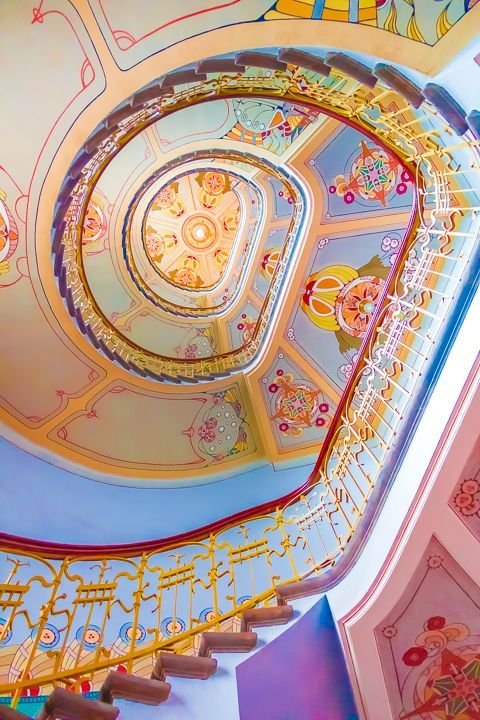
Must-Do Activities
Explore Riga’s Old Town and Art Nouveau District
Spend time wandering the atmospheric streets of Vecrīga, discovering hidden courtyards, historic churches, and lively squares. Don’t miss the chance to admire Riga’s Art Nouveau architecture, especially along Alberta Street, where intricate facades tell stories of the city’s prosperous past.
Visit the Riga Central Market
Dive into local life at this sprawling market, where you can taste traditional Latvian foods, buy fresh produce, and mingle with locals. It’s a sensory feast and a perfect place to try specialties like smoked fish, rye bread, and homemade cheeses.
Hike and Cycle in Gauja National Park
Take advantage of the park’s extensive trails to hike or bike through ancient forests, past rivers and cliffs. For a unique experience, hike the Mēžtaka trail or try canoeing on the Gauja River. Adventure lovers can also try bobsleighing or zip-lining.
Relax and Rejuvenate in Jūrmala
Enjoy a day or more at the beach, stroll along the pine-fringed shore, or indulge in spa treatments. Jūrmala’s wellness centers offer traditional mud therapies and massages that refresh both body and mind.
Discover Medieval Castles and History
Explore the ruins and museums of Turaida Castle and Cēsis Castle. Experience medieval life through interactive exhibits, and don’t miss the Folk Song Hill near Turaida, where Latvian culture and music come alive.
Experience Latvian Festivals and Traditions
Plan your visit to coincide with Latvia’s famous Song and Dance Festival or smaller regional folk festivals. These events showcase traditional music, dance, and costumes, offering deep insight into Latvian identity.
Visit the Rundāle Palace Gardens
Stroll through the meticulously restored rose gardens and parklands surrounding Rundāle Palace. The gardens are especially beautiful in late spring and summer when flowers are in full bloom.
Explore the Soviet History of Karosta in Liepāja
Take a guided tour of the Karosta district to learn about Latvia’s Cold War past. Visit the former military prison and naval base, now transformed into museums and cultural spaces.
Enjoy Latvian Cuisine and Markets
Sample traditional dishes such as grey peas with speck, mushroom soup, and Latvian rye bread. Visit local markets and try street food like piragi (filled pastries). Riga’s cafes and restaurants offer a mix of traditional and modern flavors.
Birdwatching and Nature Walks in Ķemeri National Park
Located near Riga, Ķemeri National Park features marshlands and bogs that are perfect for birdwatching, especially during spring migration. Walk the Great Ķemeri Bog Boardwalk for a peaceful nature experience.
Family Fun in Ventspils
Let the kids enjoy the city’s fun parks and interactive museums, while adults relax on Blue Flag beaches or explore the charming old town.
Latvia’s blend of cultural richness, natural beauty, and warm hospitality makes it a destination full of discovery and delight. Whether you’re marveling at Riga’s architecture, hiking in Gauja National Park, or soaking up the sun in Jūrmala, your 2025 trip to Latvia promises unforgettable memories and experiences.

Travel Tips
Latvia is a captivating destination where medieval cities meet wild forests and Baltic beaches. To ensure you have a smooth and memorable trip in 2025, it’s important to be well-prepared. Here’s an in-depth guide covering essential safety advice, local customs, and language basics to help you travel confidently and respectfully.
Safety Advice
General Safety
Latvia is considered a safe country for travelers, with a low overall crime rate. Violent crime is rare, and most visits are trouble-free. However, as with any destination, awareness and preparation are key to staying safe.
- Petty Crime: Pickpocketing and bag snatching do occur, especially in crowded areas like Riga’s Old Town, the Central Market, train and bus stations. Always keep your valuables secure, use a money belt or crossbody bag, and avoid carrying large sums of cash. Be particularly vigilant in tourist hotspots and on public transport.
- Scams: While scams are not rampant, some bars and pubs in Riga have been known to overcharge unsuspecting tourists, often after being lured in by friendly strangers. Never accept drinks from people you don’t know, and always check prices before ordering. If something feels off, leave immediately.
- Car and Bicycle Theft: Car theft is more common than other crimes. If you rent a car, never leave valuables inside, especially overnight or when parking in public areas. Bicycle theft can also occur, so always lock your bike securely, even for short stops.
- Solo Travelers: Latvia is generally safe for solo travelers, including women. Standard precautions apply: avoid poorly lit or deserted areas at night, and don’t leave drinks unattended in bars.
- Nature Safety: Latvia’s forests and parks are beautiful but require caution. If you’re hiking, let someone know your plans. In summer, ticks are common in grassy and wooded areas and can carry diseases like tick-borne encephalitis and Lyme disease. Wear long sleeves, use insect repellent, and check yourself for ticks after outdoor activities.
- Traffic and Road Safety: Latvia’s roads can be hazardous, with some drivers being reckless and road conditions varying, especially in rural areas. Always wear seatbelts, use helmets when cycling, and be cautious when crossing streets. Avoid driving at night, as lighting can be poor, and watch for wildlife on forest roads.
- Weather: Winters are cold and can be icy, so dress warmly and watch for slippery sidewalks. In summer, sudden rain is possible, so pack accordingly.
- Emergency Services: The emergency number in Latvia is 112 for police, fire, and medical assistance. Pharmacies are widespread and many staff speak English. Travel insurance is highly recommended for medical emergencies and unexpected incidents.
Local Customs
Greetings and Social Etiquette
Latvians are known for being reserved but polite. A firm handshake with direct eye contact is the standard greeting. In social settings, people may seem formal at first, but they are friendly and welcoming once you get to know them.
- Personal Space: Latvians value personal space and privacy. Avoid standing too close or being overly expressive during conversations.
- Punctuality: Being on time is important, both for business and social occasions. If you’re running late, it’s polite to inform your host.
- Shoes Off Indoors: It’s customary to remove your shoes when entering someone’s home. You may be offered slippers to wear inside.
- Gift Giving: If invited to a Latvian home, bringing a small gift such as flowers (an odd number, never even) or chocolates is appreciated. Avoid giving yellow flowers, which are associated with funerals.
- Table Manners: Wait for the host to begin the meal or say “Labu apetīti!” (Bon appétit) before starting. It’s polite to finish everything on your plate.
Public Behavior
- Quiet in Public: Latvians tend to speak softly in public places and avoid loud or boisterous behavior.
- Respect for Nature: Latvia’s natural landscapes are cherished. Always follow marked trails, don’t pick wildflowers in protected areas, and take your litter with you.
- Photography: Ask permission before photographing people, especially in rural areas or during traditional events.
Cultural Sensitivities
- History: Latvia has a complex history, including periods of occupation. Be sensitive when discussing politics or historical events, and avoid making assumptions about people’s backgrounds.
- LGBTQ+ Travelers: Latvia is generally tolerant, especially in urban areas, though public displays of affection may attract attention in rural regions.
Language Basics
Latvian (latviešu valoda) is the official language, and while English is widely spoken in Riga and tourist areas, learning a few local phrases will be appreciated and can enhance your experience.
Essential Latvian Phrases:
- Hello: Sveiki (SVEH-kee)
- Goodbye: Uz redzēšanos (OOZ red-ZEH-sha-nos)
- Please: Lūdzu (LOOD-zoo)
- Thank you: Paldies (PUHL-dyehs)
- Yes: Jā (YAH)
- No: Nē (NAY)
- Excuse me / Sorry: Atvainojiet (AHT-vai-noh-yeht)
- Do you speak English?: Vai jūs runājat angliski? (VAI yoos roo-NAH-yaht ANG-lis-kee)
- How much does this cost?: Cik tas maksā? (TSEEK tahs MAHK-sah)
- Where is…?: Kur ir…? (KOOR eer…)
- I don’t understand: Es nesaprotu (Ehs neh-SAH-proh-too)
Language Tips:
- Russian is also spoken, especially among older generations and in some urban areas. Younger Latvians and those in the tourism industry are likely to speak English.
- Signs in tourist areas are often in both Latvian and English, but in rural areas, Latvian may be the only language used.
- Making an effort to use basic Latvian greetings and politeness phrases will be warmly received.
Additional Practical Tips
- Money: Latvia uses the euro. Credit and debit cards are widely accepted, but carry some cash for small purchases, especially in rural areas or markets.
- Tipping: Tipping is not obligatory but appreciated. In restaurants, rounding up the bill or leaving 5-10% is customary for good service.
- Public Transport: Buses, trams, and trains are efficient and affordable. Buy tickets in advance or at kiosks, and validate them upon boarding.
- Health: No special vaccinations are required, but make sure your routine immunizations are up to date. Bring any necessary medications and a copy of your prescriptions.
Final Tips for a Smooth Journey
Latvia is a destination where safety, respect, and curiosity go hand in hand. By staying vigilant in crowded areas, respecting local customs, and embracing a few words of Latvian, you’ll find Latvians to be gracious hosts and your journey rewarding. Whether you’re exploring medieval streets, hiking through ancient forests, or relaxing by the Baltic Sea, these travel tips will help you make the most of your Latvian adventure in 2025.

